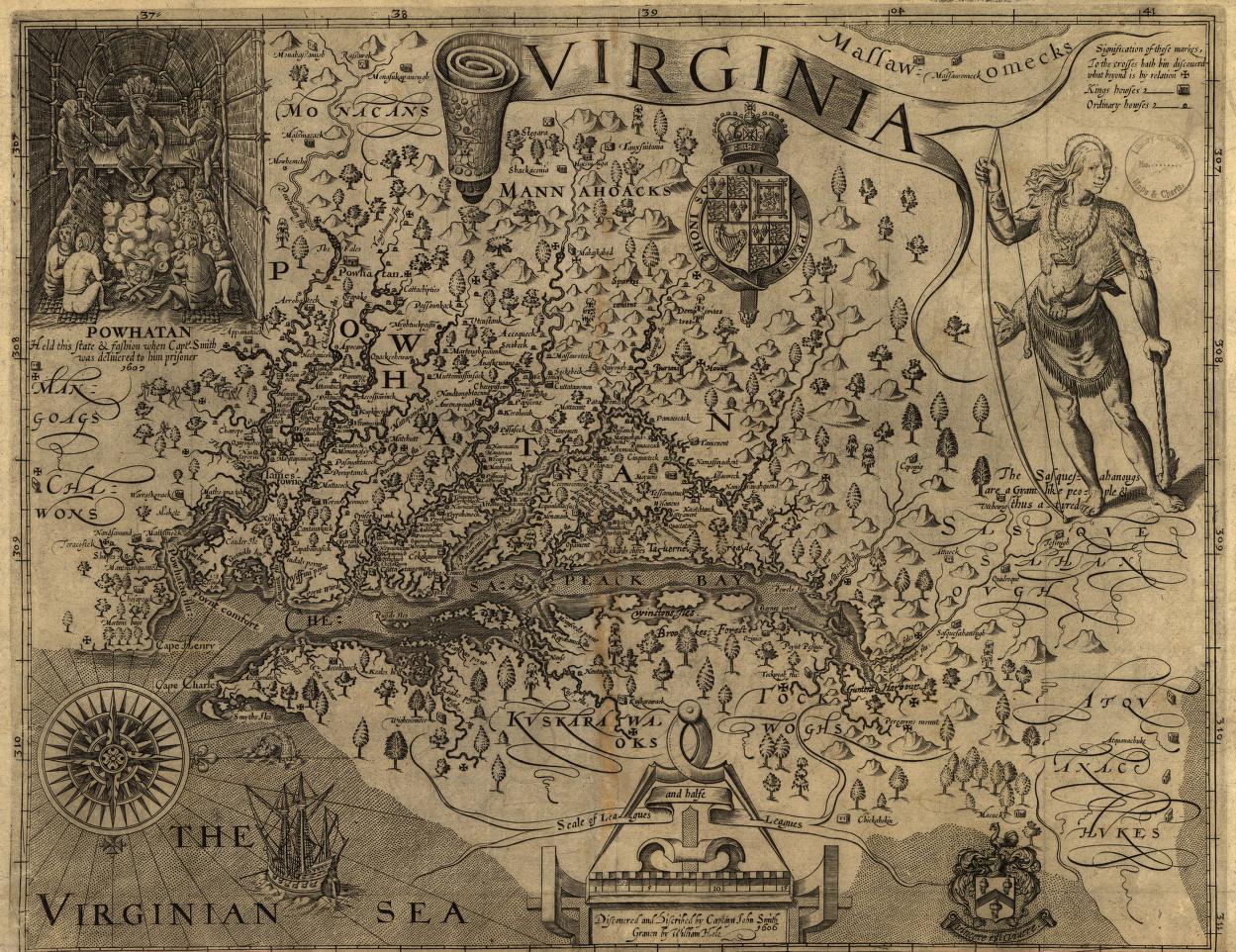On September 5, 1664, two men faced one another across a small stretch of water. Onshore, just outside the fort at the southern tip of Manhattan Island, stood Peter Stuyvesant, director-general of the Dutch colony of New Netherland, his 52-year-old frame balanced on the wooden stump where he had lost a leg in battle a quarter century earlier. Approaching him aboard a small rowboat flying a flag of truce was John Winthrop, governor of the Connecticut colony, until very recently, a man Stuyvesant had called his friend.
March 2011

Arriving at the English colony of Jamestown in late May 1610, Sir Thomas Gates was appalled by what he discovered. The fort’s palisades had been torn down, the church ruined, and empty houses “rent up and burnt.” Only 60 or so colonists remained alive of the more than 200 who had crowded into the fort the previous fall, and these were “Lamentable to behold.” Those able to raise themselves from their beds to meet Gates and his men “Looked Like Anatomies” [skeletons]. They cried out, “We are starved We are starved.” Yet Gates could do little to relieve them.
In June 1564, 300 French colonists arrived at the mouth of the St. Johns River near present-day Jacksonville, Florida, after an arduous voyage across the Atlantic. Among these colons were men from some of France’s greatest noble houses, bedecked in bright clothes and suits of gilded armor, accompanied by a train of artisans and laborers. They built a triangular outer wall on the southern bank, dragged several cannon into it, and set about raising a village, which soon contained houses, a mill, and a bakery. At first the local Timucua were friendly, furnishing them with food and giving them advice about survival.
France had so far had established only rugged outposts along what would become known as the St. Lawrence, to harvest fish and furs and probe for the Northwest Passage. Yet these lowly stations soon fell short of satisfying France’s grand ambitions for the New World.
In the summer of 1605, the French explorer Samuel de Champlain sailed along the coast of New England, looking for a likely spot to place a colony — a place more hospitable than the upper St. Lawrence River, which he had previously explored. Halfway down the Maine coast he began to find spots with good harbors, abundant supplies of freshwater, and big spreads of cleared land. The problem was that these parcels were already occupied. The peoples there were happy to barter with him and treat his sailors to fine dinners. But none were interested in providing free real estate. A skirmish in Nauset Bay, halfway down Cape Cod, convinced Champlain that he had no hope of starting a colony in this area. Too many people already lived there.
Regarding the painting Washington and “Friends”
1. Martin Luther King Jr.
2. Albert Einstein
3. Mark Twain
4. Franklin Delano Roosevelt
5. Susan B. Anthony
6. Abraham Lincoln
7. Thomas Jefferson
Curators at Montpelier, President James Madison's estate near Orange, Virginia, recently installed a mural in the new visitors center cafe which depicts Dolley Madison's courageous removal of Gilbert Stuart's famous portrait of George Washington as the British bore down upon Washington during the War of 1812.
Here's the First Lady herself writing about the events to her sister on August 23, 1814, the day before the British burned Washinton:
Dear Sister,
Old Sturbridge Village is the largest living history museum in New England, spanning over 200 acres with a working farm, 59 antique buildings, and three water-powered mills. In addition to its interactive exhibits that highlight New England life in the Early Republic era, the village contains impressive collections of firearms, pre-electric lighting devices, and a live herb garden.
Two brothers, Albert B. and J. Cheney Wells of nearby Southbridge began to collect New England antiques after their father, George Washington Wells, had established a successful spectacles company in the mid-1800s. By 1935, Alfred had opened the Wells Historical Museum to display his antiques and artifacts. The family began acquiring more land and buildings to give the museum a village-like setting, leading to the Old Sturbridge Village's opening in 1946.
Generations of remarkable Americans are kept in the company of their fellow citizens at the National Portrait Gallery.
The Gallery presents the wonderful diversity of individuals who have left—and are leaving—their mark on our country and our culture.
Through the visual and performing arts, the Gallery celebrates leaders such as George Washington and Martin Luther King Jr., artists such as Mary Cassatt and George Gershwin, activists such as Sequoyah and Rosa Parks, and icons of pop culture such as Babe Ruth and Marilyn Monroe.
For anyone fascinated by famous Americans and their stories, the National Portrait Gallery is a must–visit destination.
You have wonderful things in your collection. But probably too few people know it.
Now it's easy and inexpensive to help the world discover what you have to offer by adding your collection to the National Portal to Historic Collections. There are lots of great reasons:
• Increase the visibility of your institution
• Serve a much wider audience
• Get feedback from your local community on items in your collection.
• Increase image sales and loan fee income.
For more information, contact:
Museum Services Manager, American Heritage Society
240-453-0900 x 21
collections (@) our domain.
There are many good reasons to put your collection on the Internet:
Increase the visibility of your institution
Increase utilization of your collections
Increase image licensing -- people don't use images they can't find!
Increase fees from loans
Chances are, your collections are underutilized and underappreciated. Now you can easily and inexpensively move your collections to the Internet, and dramatically increase their visibility.
For more information, see the following:
Overview to the National Portal (http://50.56.66.97/national-portal-historic-collections)
Top 10 Goals (http://50.56.66.97/top-10-goals-national-portal)
Frequently Asked Questions (http://50.56.66.97/faq-museums)
Our Advisory Board – Role and Members
Working Committee
What People Are Saying
About American Heritage
